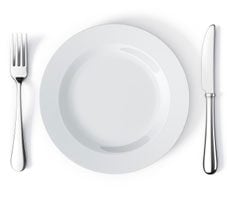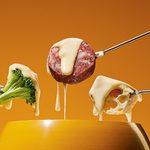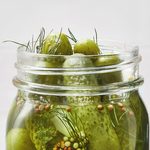Turkey info
All you need to know to cook the perfect turkey.

Turkey-Buying Info
When you're talking turkey, fresh is better and easier than frozen. Buying a fresh bird does mean a trip to the butcher, but it will eliminate the need to defrost it. This is a bigger advantage than you might think. Defrosting has to be done in the refrigerator, and takes about 24 hours for each 5 pounds of turkey. That means a 15-pound bird would need to take up residence in your fridge for 72 hours before it would be ready to cook!
In addition, unless you'll be feeding an enormous crowd, it's best to buy a smaller, 12- to 16-pound turkey than those oven-busters that can weigh in at 24 pounds plus. Smaller birds roast more quickly, and it's less likely that the white meat will dry out before the dark meat is done.
The Quick-Thaw Method
Never defrost a frozen turkey at room temperature — it can cause food poisoning. Instead, hasten the thawing process by placing the turkey in its unopened wrapper or a sealed plastic bag in a sinkful of cold (not warm) water. Change the water every 30 minutes until the meat feels soft. Allow 30 minutes per pound for this method.
To Stuff or Not to Stuff?
We think it's best to skip stuffing your turkey for two reasons: 1) a stuffed bird takes longer to cook, and 2) if it's stuffed too far in advance, it gives harmful bacteria a chance to grow, causing food poisoning. Instead, we flavor our unstuffed bird by placing vegetables inside the body cavity before roasting, and cook the stuffing in a separate baking dish. Technically, it's then called "dressing." But it tastes the same (even better, actually, because it has a chance to become crisp on top).
If you still want to stuff, fill the cavity loosely, since the stuffing will expand as the turkey roasts. Make the stuffing the day you intend to cook the turkey and keep it refrigerated until ready to use. Wait to stuff the bird until you are about to put it in the oven.
When the turkey is done, scoop out the stuffing and place it in a serving dish before carving. If you're not serving right away, be sure to remove it before the bird cools. Always wrap and refrigerate turkey and stuffing separately.
How to Truss a Turkey
Step 1:
Stuff neck and body cavities. Secure the neck skin to the back with round toothpicks or trussing pins (available at housewares stores).
Step 2:
Hold the sides of the body cavity opening (the vent) together, then pin it closed with toothpicks, a skewer, or trussing pins.
Step 3:
Bring the legs up and together over the vent, wrap with string and tie securely. The ends of the legs should be touching.
Step 4:
Insert meat thermometer in thickest part of thigh. To protect wing tips from burning, tuck them securely behind shoulders.
How Long Should I Roast it For?
Turkey must be roasted at 325°F until a meat thermometer inserted in the thickest part of the thigh — but not touching the bone — reads 180°F. Here are some approximate roasting times.
| Weight (pounds) | Unstuffed (hours) | Stuffed (hours) |
| 8 to 12 12 to 14 14 to 18 18 to 20 20 to 24 |
2-1/2 to 3 3 to 3-1/4 3-1/4 to 4-1/4 4-1/4 to 4-1/2 4-1/2 to 5 |
3 to 3-1/2 3-1/2 to 4 4 to 4-1/2 4-1/4 to 4-3/4 4-3/4 to 5-1/4 |
Baste it Till it's Brown
Basting every half hour or so will result in a beautiful, evenly browned bird. You can use a bulb baster, or even a spoon, but a pastry brush will give you the best results. If the breast starts browning before the rest of the turkey, simply cover it with a tent of aluminum foil, then remove the foil for the last half hour of cooking.
Carving 101
It's not hard to carve a turkey correctly. All you really need is patience and a long, thin knife.
Step 1:
Using a knife and your fingers, cut and remove drumsticks, thighs, and wings at their joints. Hold the breast firmly with a fork. Then, start to remove the breast meat by making a deep cut — parallel to the platter — at about the height of the wing joint.
Step 2:
Carefully carve the breast downward in thin slices.
PHOTOS: © Martin Jacobs



